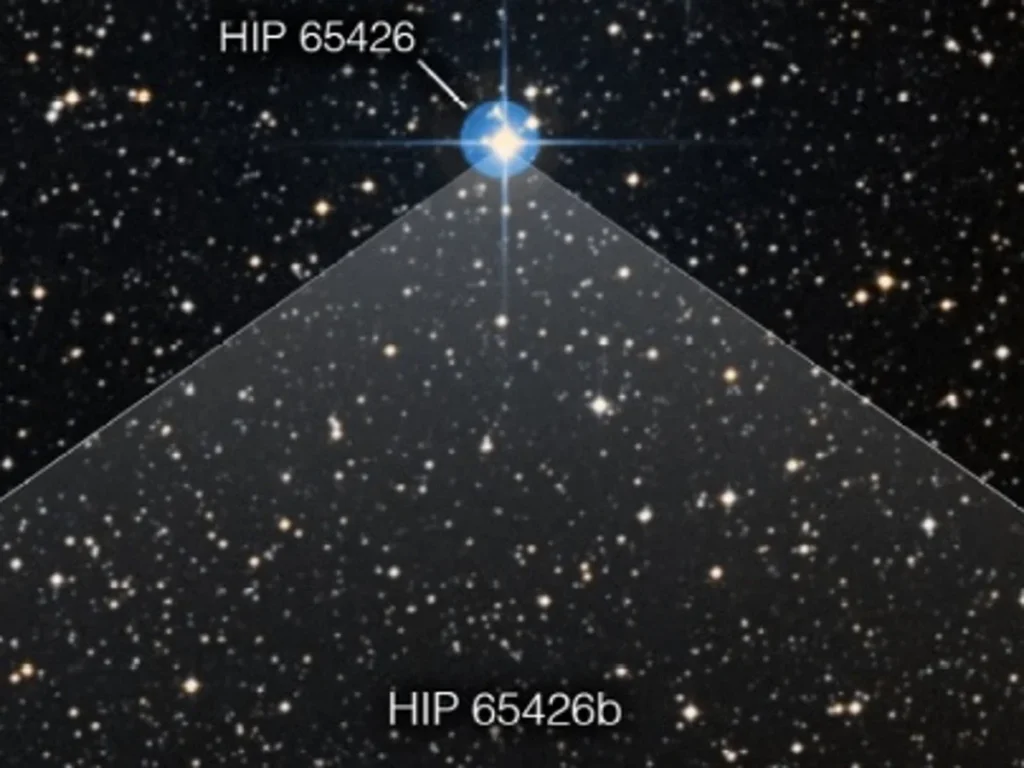The James Webb Space Telescope (JWST) has observed an exoplanet spiraling toward its star—a dramatic “death plunge” that offers a rare glimpse into planetary orbital decay.
Key Details of the Discovery:
- Exoplanet Identified: The planet, WASP-12b, is a hot Jupiter (a gas giant orbiting extremely close to its star).
- Orbital Decay Detected: Webb’s precise measurements confirmed the planet’s orbit is shrinking, bringing it closer to its host star over time.
- Fate of the Planet: Eventually, WASP-12b will be torn apart by tidal forces or consumed by its star—likely within a few million years.
- Cause of Decay: Gravitational interactions between the planet and its star, possibly influenced by tidal dissipation or other unseen factors.
Why This Matters:
- First Direct Observation: While orbital decay has been theorized, Webb’s data provides some of the clearest evidence of a planet’s impending doom.
- Insight into Planetary Evolution: Helps scientists understand how planets interact with their stars and why some systems lack close-orbiting gas giants.
- Future of Other Planets: Suggests that hot Jupiters may often end their lives this way.
Scientific Context:
WASP-12b was already known for its extreme environment—its atmosphere is being stripped away by its star, and its dayside temperature exceeds 2,500°C (4,600°F). Webb’s Near-Infrared Spectrograph (NIRSpec) provided new data on its decaying orbit.
This discovery was published in The Astrophysical Journal Letters and highlights Webb’s ability to track dynamic cosmic events in unprecedented detail.
How JWST Measured the Orbital Decay
- Transit Timing Variations (TTVs):
- Webb monitored subtle changes in the timing of WASP-12b’s transits (when the planet passes in front of its star).
- If a planet’s orbit is decaying, each transit occurs slightly earlier than predicted—a smoking gun for orbital shrinkage.
- Previous observations (e.g., from Spitzer and ground telescopes) hinted at this, but Webb’s precision confirmed it.
- Tidal Dissipation Analysis:
- The star’s gravity distorts the planet, creating tidal bulges. Energy from these deformations is lost as heat, slowly sapping the planet’s orbital energy.
- Webb’s data helped model how quickly this process is happening (~30 milliseconds per year in orbital period decrease).
- Atmospheric Escape Observations:
- WASP-12b is so close to its star that its atmosphere is boiling away, forming a comet-like tail.
- Webb’s NIRSpec and NIRISS instruments detected heavy elements like magnesium and iron in this escaping gas—evidence of the planet being actively destroyed.

Other Doomed Exoplanets
WASP-12b isn’t alone—here are other planets observed in death spirals or being consumed by their stars:
- Kepler-1658b
- A hot Jupiter detected by Kepler, later confirmed by TESS to be spiraling inward (losing ~130 milliseconds per year in orbital period).
- Expected to collide with its star in ~2.5 million years.
- KELT-16b
- An ultra-hot Jupiter with a 1-day orbit, likely to be tidally disrupted within the next million years.
- HD 209458b (Osiris)
- One of the first exoplanets found with an evaporating atmosphere (via Hubble). While not yet in a death plunge, it’s losing ~200 million kg of gas per second.
Why Some Planets Spiraling Inward (And Others Don’t)
- Tidal Forces: Dominant in close-orbiting gas giants (like WASP-12b). Smaller, rocky planets (e.g., Earth) are less affected.
- Stellar Activity: Young, magnetically active stars can accelerate orbital decay via magnetic braking.
- Resonances & Companions: Multi-planet systems (e.g., TRAPPIST-1) can destabilize orbits over time.
Future Research
- JWST’s Role: Will study more ultra-hot Jupiters (e.g., KELT-9b) to compare decay rates.
- PLATO Mission (2026): ESA’s upcoming telescope will monitor thousands of stars for transit timing variations, potentially finding more doomed planets.




